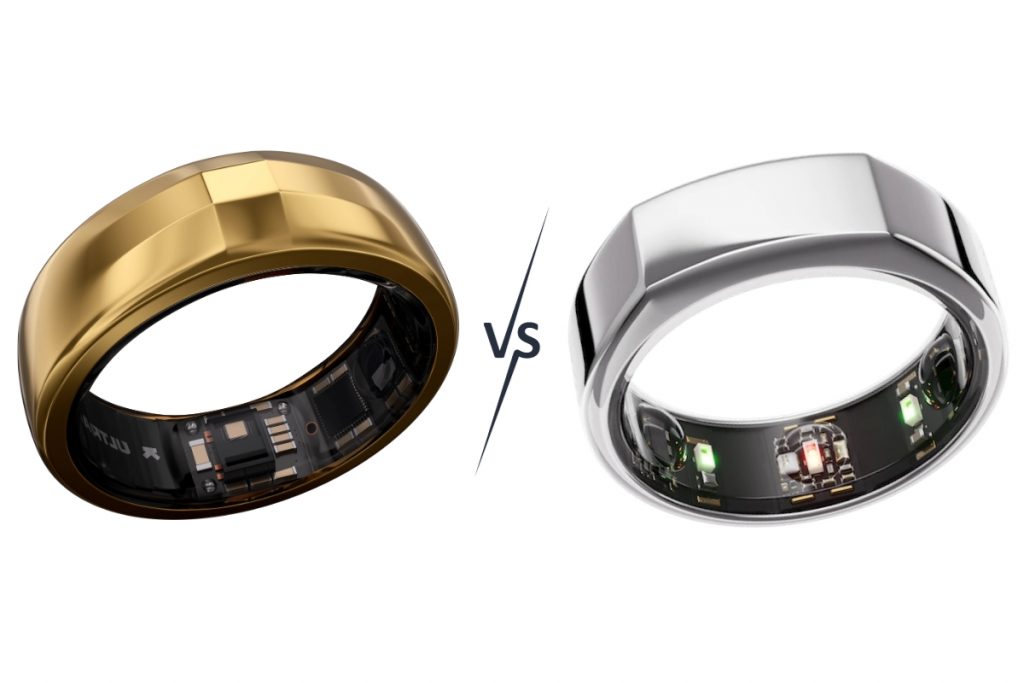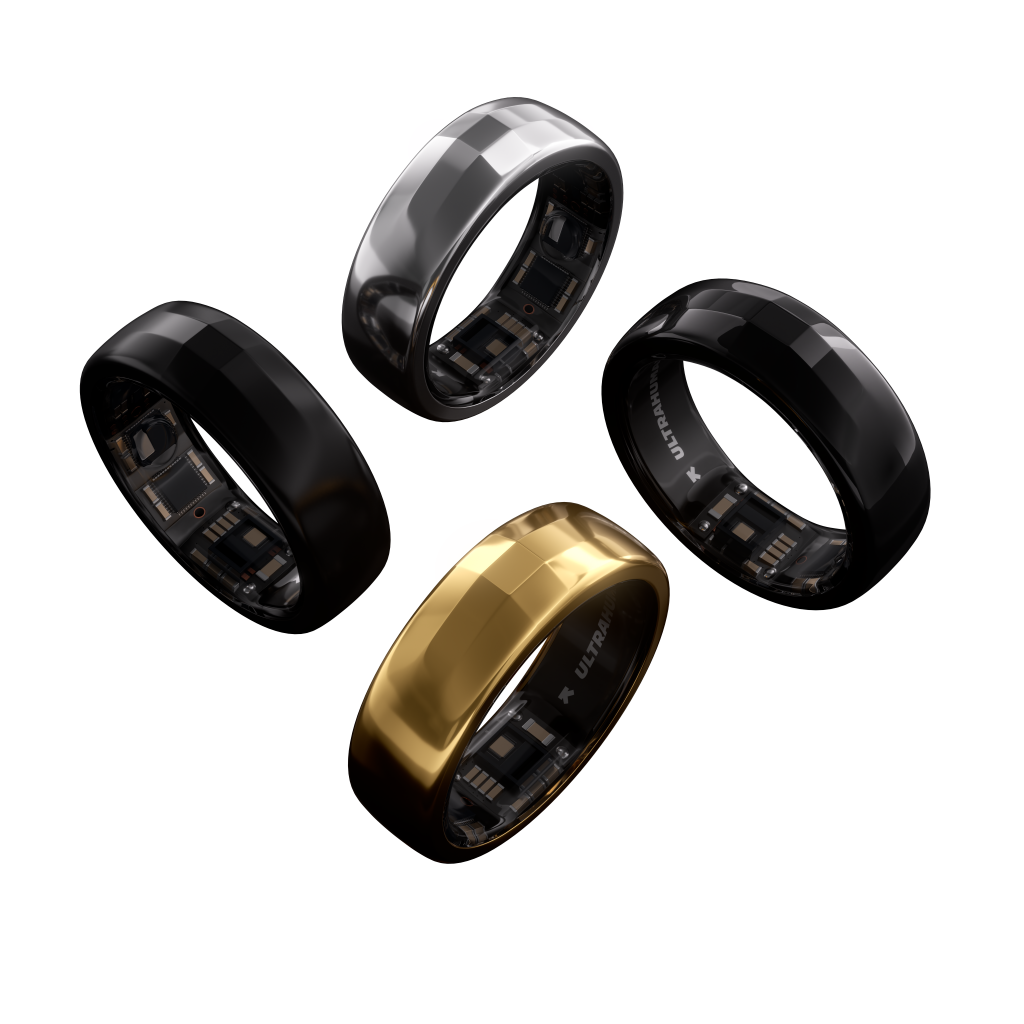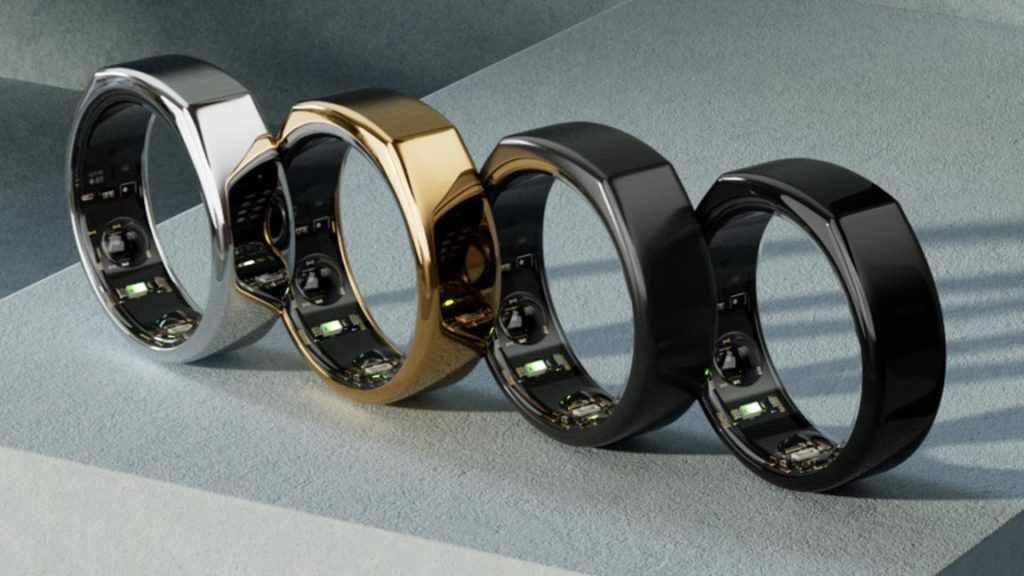
Ultrahuman Ring Air and Oura Ring Gen 3 are two of the most well-designed health and wellness smart rings. The former markets itself as the “most comfortable smart ring,” while the latter hails itself as the “most trusted smart ring.” One is a newcomer, the other a veteran.
While it’s easy to lean towards the market leader, you cannot discount the new kid on the block as it delivers a performance the way the more experienced does. If you are wondering which wearable to get, between Ultrahuman Ring Air and Oura Ring Gen 3, you are in the right place.
In this comparison review, we break down the differences between Ultrahuman Ring Air and Oura Ring Gen 3, including the features and functionalities, specs and design, and pricing and availability.
Ultrahuman is an Indian health tech maker based in Bangalore. They introduced their smart ring in October 2022 through a Kickstarter campaign and started hitting the shelves in September 2023.
Oura is a Finnish health tech company with headquarters in Oulu. Its widely popular Oura Ring Gen 3 was released in November 2021, but its first-generation smart ring came out in 2015.
Also Read: Fitbit Charge 5 vs. Oura Ring 3: Which Is More Advanced Health and Fitness Tracker?
Both wearables have almost the same set of features, but the differences are very subtle. Before diving deeper into these smart rings, here’s a table comparing Ultrahuman Ring Air and Oura Ring Gen 3:
| ULTRAHUMAN RING AIR | OURA RING GEN 3 | |
|---|---|---|
| Sleep tracking | Yes | Yes |
| Activity tracking | Yes | Yes |
| Heart rate monitoring | Yes | Yes |
| Recovery monitoring | Yes | Yes |
| Stress management | Yes | Yes |
| Blood oxygen monitoring | No | Yes |
| Blood sugar monitoring | Yes | No |
| Period prediction | No | Yes |
| Battery life | Up to 6 days | Up to 7 days |
| Water protection | Water-resistant (up to 100 meters) | Water-resistant (up to 100 meters) |
| Monthly membership | N/A | $5.99 per month |
| Price | $349 | $299 |
| Get Ultrahuman Ring Air here! | Get Oura Ring Gen 3 here! |
Ultrahuman Ring Air vs. Oura Ring Gen 3: Features and Functionalities
Ultrahuman Ring Air and Oura Ring Gen 3 share a lot in common. In terms of features and functionalities, here’s how they differ from one another:
Sleep Tracking
A basic health and wellness functionality, sleep tracking is present for both wearables. They can track the different sleep stages (light, REM, and deep sleep) and sleep duration. Ultrahuman Ring Air and Oura Ring Gen 3 also keep tabs on your resting heart rate (RHR), heart rate variability (HRV), restfulness, and skin temperature and provide a score for your overall sleep.
Also Read: RingConn vs. Ultrahuman Ring Air: What Is the Difference?
The best thing about Oura is how it drills down your biosignals, even providing insights into your tossing and turning. Ultrahuman does take into account some factors that affect your sleep and presents them on the app in a user-friendly manner.
Also Read: Ultrahuman Ring Air Review: Should You Buy It?
Activity Tracking
Another core feature of health and wellness wearables is activity or fitness tracking. Ultrahuman Ring Air and Oura Ring Gen 3 can track steps, calorie burn, and active heart rate. On top of that, both can automatically detect activities, so there’s no need for you to manually record your activities. Keep in mind that Oura Ring Gen 3 uses a 3-axis accelerometer, while Ultrahuman Ring Air uses a 6-axis accelerometer, which makes it more accurate with its activity tracking.
Also Read: Oura Ring Test: What’s the Verdict After Using It for 30 Days?
Heart Rate Tracking
Oura Ring Gen 3 and Ultrahuman Ring Air use a bunch of sensors for heart rate tracking, including red and green LEDs and infrared PPG. Heart rate metrics they can monitor include active heart rate (for activity tracking), resting heart rate (for sleep tracking), and heart rate variability (for recovery monitoring).
Also Read: RingConn Smart Ring Review: Is It Worth It?
Recovery Monitoring
Recovery monitoring of wearable devices is based on sleep, activities, and heart rates. Both wearables have recovery measures. Oura calls it Readiness Score, while Ultrahuman calls it Recovery Index. Ultrahuman Ring Air has a feature that tells you when to consume stimulants like coffee. I find it really nifty, allowing me to enhance my mood and improve my mental clarity.
Stress Management
Ultrahuman Ring Air and Oura Ring Gen 3 have skin temperature sensors, the key tool for monitoring daily stressors. Oura, however, does not have clear indicators as to what these stressors could be unlike Ultrahuman Ring Air, which not only depends on tracked data but also looks into common stressors like caffeine intake, food intake, light exposure, and intensity of workouts.
Also Read: Garmin Venu 3 Review: Is It a Good Fitness and Health Wearable?
The Outliers
One important feature Ultrahuman Ring Air has that Oura does not have is its continuous glucose monitor (CGM) sensor. For diabetics, this changes the game among all wearable devices, allowing them to constantly keep track of their blood sugar levels.
On the other hand, Oura Ring Gen 3 does have period prediction capabilities, unlike Ultrahuman Ring Air, allowing women to plan a pregnancy or avoid it, for that matter. The skin temperature sensor is the main sensor used for this functionality, which Ultrahuman Ring Air has. So we might be able to see this feature in the smart ring sooner or later.
Also Read: 5 Best Smartwatches for Sleep Tracking
Ultrahuman Ring Air vs. Oura Ring Gen 3: Specs and Design
Made of titanium and coated in tungsten carbide carbon, Ultrahuman Ring Air’s outer shell is as durable as it can be. The inner shell is coated with hypoallergenic epoxy resin. On the other hand, Oura Ring’s outer shell is also made of titanium coated with PVD, while the inner shell is made of non-allergenic molding.
Ultrahuman Ring Air weighs 2.4-3.6 grams, while Oura Ring Gen 3 weighs 4-6 grams, depending on the size. Both rings are slim enough to be comfortably worn anytime. However, Oura Ring Gen 3 has a more elegant finish.
Battery-wise, Oura Ring Gen 3 can last up to 7 days, and each full charge takes about 20 to 80 minutes. Meanwhile, Ultrahuman Ring Air can last up to 6 days, and each charge takes about 90 to 120 minutes.
When it comes to water resistance, both wearables can be used underwater for up to 100 meters. You can swim, shower, and snorkel with them. Only Ultrahuman is endorsed for diving.
Also Read: Oura Ring 3 vs. Garmin Fenix 7 Review: Which Device Fits You Best?
Ultrahuman Ring Air vs. Oura Ring Gen 3: Pricing and Availability
Ultrahuman Ring Air is available in 6-12 mm sizes in colors aster black, matte black, bionic gold, and space silver. Each ring comes with a charger and cord.

Oura Ring Gen 3 is available in two styles: Heritage (price starts at $299) and Horizon (price starts at $349). Colors available include silver, black, stealth, gold, and rose gold. It comes with a free 1-month premium membership, which costs $6 per month after.

The Verdict: Which Is Better?
The burning question now is—is Oura Ring Gen 3 still better than Ultrahuman Ring Air? Or, does Oura Ring finally have a good match? Well, personally, you can never go wrong either way as both devices have almost the same set of features, except for one thing—blood sugar monitoring. If you need a CGM sensor, then Ultrahuman Ring Air is the better option here. Other than that, both devices are robust health companions.
For the latest wearable tech news and updates, follow Smart Ring News on Facebook, Twitter, or LinkedIn.
